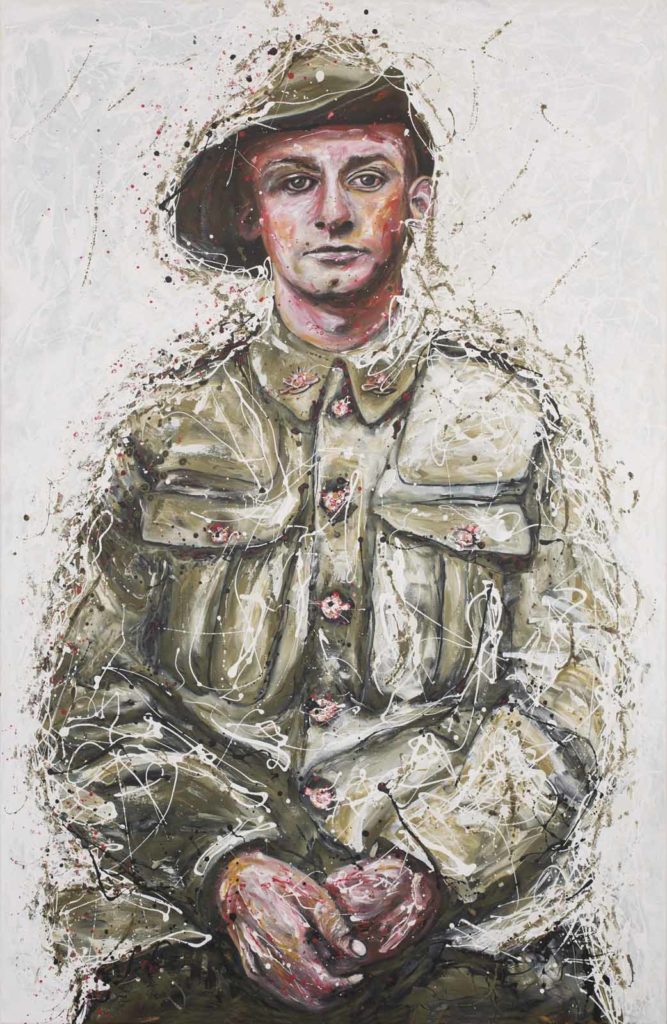Joseph Wood
THE LIMBLESS SOLDIER
He looks like the larrikin his family says he was, but Joseph Wood was another 29th Battalion soldier (the same unit in which Walter Spencer served) whose war experience took a terrible toll on him, although he dealt with it with enormous grace and good humour.
When this image – then anonymous – appeared on the television stories announcing the discovery of the Lost Diggers plates early in 2011, Joseph’s family recognised him immediately. But they were also struck by how much the Joseph they knew looked in this photograph as if he had ‘died behind his eyes’. When this picture was taken in November 1916, Joseph had just survived weeks of gruelling trench warfare in and out of the frontlines around Fromelles and within a year his life was to be blighted by the loss of a limb.
His story highlights the often grim plight of tens of thousands of diggers who survived the war but had to struggle for years with a major disability. In Joe’s case – or ‘Jo’s, as his family dubbed him – he lost his right leg, but Joe’s way of dealing with it was typically often very amusing.
Joseph was born to a poor working-class family in Northern England, he spoke later in life of never having enough to eat. In 1908 he and brother decided their prospects were better on the other side of the world and boarded a ship to Australia. Joseph was just thirteen.
By the time the war began six years later, Joseph was living at Newmarket in Melbourne and working as a bottle blower.
Joseph enlisted in July 1915 part of reinforcements for the 29th Battalion. Perhaps Joseph decided to enlist because he had few ties to Australia and it was a chance for a trip back to England to see his other, a journey that would have been almost certainly unaffordable for him otherwise.
Joseph survived the slaughter of Fromelles, but he was wounded in action in December 1917 – possibly at Messines. Years later he told his family that he was lying in a field with many dead soldiers and the Germans allowed a halt to the guns for the Allies to collect their dead; Joseph said he pretended to be dead until he was rescued. Joseph was being treated for a severe wound to the thigh, he was sent to England and hospitalised until June 1918, but attempts to save his infected leg failed. Twelve days after the Armistice his right leg was amputated.
Joseph Wood arrived back in Australia on a hospital ship in October 1919 and was sent to a recovery hospital for amputees in Sorrento in Melbourne. It was there he met Mary Ethel Murphy – or Molly and soon married and had two children, Graham and Nola.
During the Depression, the Wood family moved to Lithgow, where Joseph worked in the small-arms factory. His grandson, Graham, says he was one of the few men in Lithgow who remained employed during the Depression and he got the job largely because he was a war veteran and an amputee.
Joseph Wood’s daughter, Nola Hayley, says her father never spoke about the war other than to tell the occasional story about his injury and he never complained even though he was often in a lot of pain.
Joseph died of a heart attack in 1980, just one day after visiting a doctor and complaining about pains in his chest.


